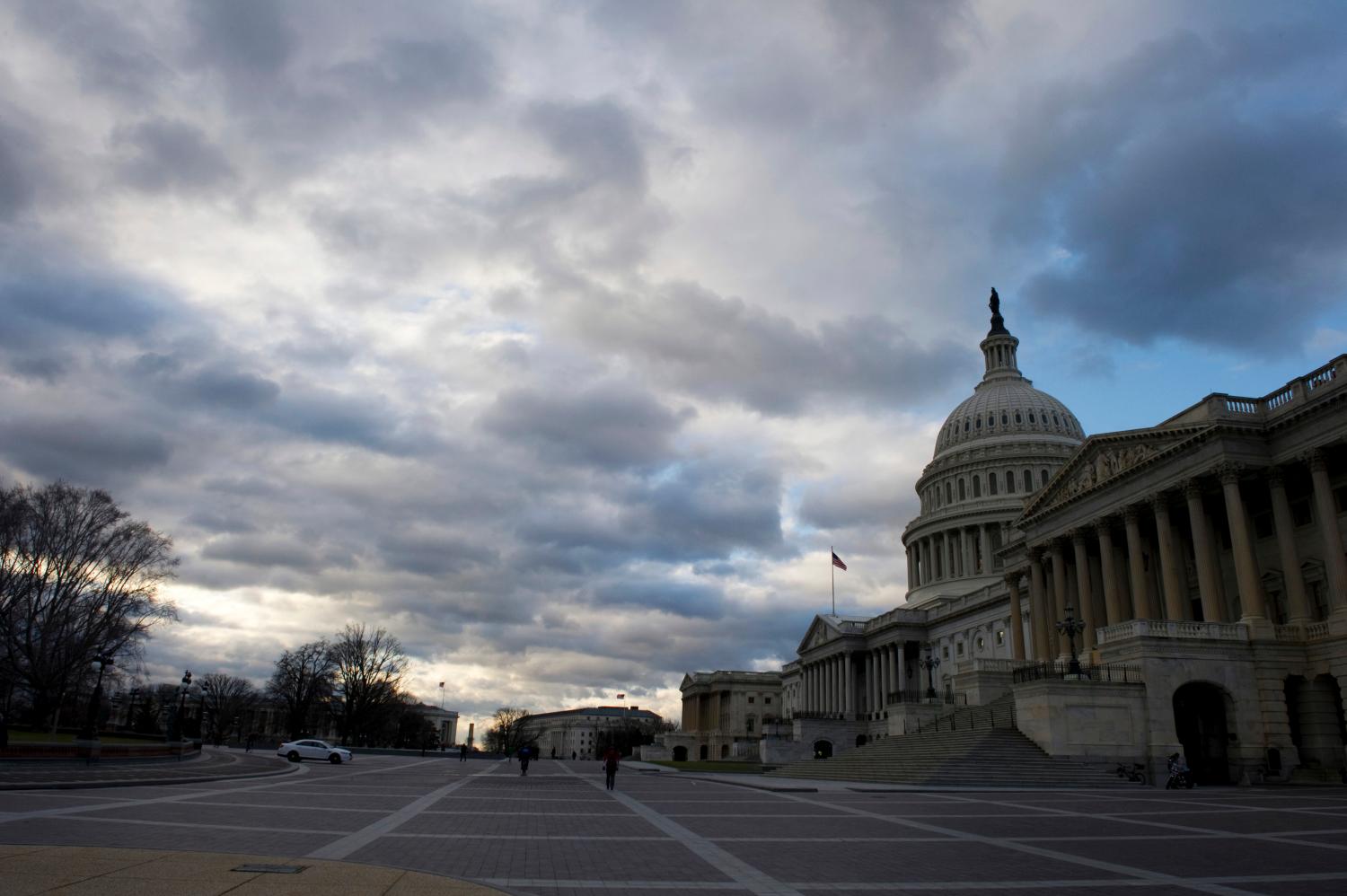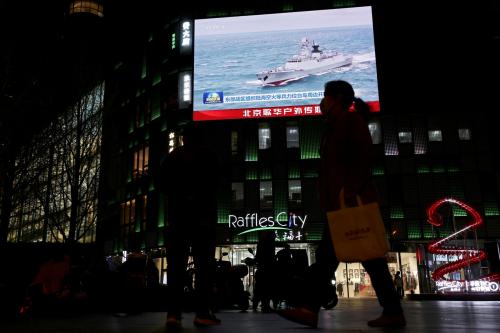The sixteen members of NATO will soon invite Poland, Hungary, the Czech Republic, and possibly others to join. There are strong arguments for enlarging the alliance, above all securing the democratic and Western orientation of selected former Warsaw Pact states and hedging against political uncertainty in Russia.
But there are arguments at least as strong against enlargement. Expanding NATO could complicate its ability to achieve consensus, weaken the security of those countries not brought in, increase demands on defense budgets when they are already overstretched, and alienate Russia. In the process, Europe’s security could well diminish, not grow.
This debate is increasingly moot. Events have all but reached a point of no return. The costs of going ahead are less than those of changing course. Still, how NATO is enlarged is likely to prove as important as whether. Here a balance must be struck. Legitimate Russian interests need to be reflected in establishing a standing mechanism for close consultations, adjusting the treaty limiting conventional forces in Europe, and avoiding new NATO military deployments that would be unwarranted and provocative. At the same time, the West should take steps to build the confidence of countries not being embraced by NATO and preserve the right to take additional military steps in Europe that involve NATO’s new members, should Russia’s behavior warrant.
POLICY BRIEF #16
It was predictable that NATO, a principal instrument of U.S. foreign policy in Europe throughout the cold war, would become the subject of debate in the wake of the demise of the Soviet Union and the Warsaw Pact. Not surprisingly, questions have been raised about the need for NATO’s continued existence, the proper balance between European and American contributions, and both the desirability and feasibility of adopting new missions for NATO, from peacemaking inside Europe to warfighting outside. What was less predictable, however, was that the most intense and prolonged debate would be over NATO’s size. One reason such a debate was not predicted is that it was anything but inevitable. To the contrary, the first principal initiative of the Clinton administration toward Europe was the Partnership for Peace, an attempt to develop relationships with and strengthen the states of the former Soviet Union and Warsaw Pact. States were offered a menu of potential political and military arrangements, including regular consultations, educational opportunities, and extensive training and exercising. The intention was to professionalize and Westernize their military establishments while offering these countries a degree of reassurance—and doing all this in a manner designed to reduce the chance of a hostile Russian reaction.
Yet less than one year after launching the Partnership for Peace, the Clinton administration, with little debate or public preparation, introduced the goal of NATO expansion. What appeared to motivate the administration was an attempt to satisfy several desires: of central European leaders for a closer tie to the West, of Americans of central European descent (as well as the German government) who urged that the United States offer such a tie, and of administration officials who sought to launch a new and dramatic foreign policy undertaking and deny an issue to Republicans, who had included NATO expansion in the Contract for America.
The immediate consequence of introducing the possibility of NATO expansion was to reduce the appeal of the Partnership for Peace. A good many countries (including those who had been content with what the partnership offered) expressed their desire to graduate to NATO.
NATO set basic criteria for joining, including being a stable democracy, having civilian control of armed forces, possessing enough military capacity to contribute meaningfully not simply to one’s own defense but also to collective security, and having no active disputes within or on one’s borders. Poland, Hungary, the Czech Republic, and conceivably one or two others will receive invitations to join NATO when its leaders hold a summit at Madrid in early July. The plan is to welcome them into the alliance by 1999, NATO’s fiftieth anniversary.
The Case For
There is a relatively straightforward diplomatic and strategic case for enlargement. Twice in this century central and eastern Europe were the source of instability that led to great wars. An expansion of NATO to this area will lock in the dividends of the cold war’s end and greatly diminish the odds that this region will again become a battlefield.
In addition, NATO provides a reassuring anchor to these newly independent democracies. President Clinton made such arguments in a letter sent to Congress on February 24: By extending the underpinnings of security beyond the arbitrary line of the Cold War, NATO can strengthen democratic and free market reforms for all of Europe, just as it has done for Western Europe in the three decades since 1949. By admitting new states to the alliance, NATO will limit and help eliminate a potentially destabilizing power vacuum in Europe, widening the circle of like-minded nations sharing common values and willing to shoulder common responsibilities and burdens.
Such a contribution became especially important when the European Union made clear that it would not be prepared to take in these countries for at least several more years.
There is another, related justification that is mentioned less but is no less real. NATO’s enlargement serves as a hedge against the possibility that Russia will reemerge as an authoritarian country prone to adventurism beyond its borders and the use of military force. According to this logic, it is better to have a larger and stronger NATO in place than to try to rush to counter a Russian threat should it ever emerge.
The Case Against
A second consequence of proposing NATO’s enlargement was to kick off a major debate—between Russia and the West and within the United States among foreign policy elites—over the wisdom and desirability of the initiative.
There are a number of arguments than can be made against enlargement. The first involves the potential impact on NATO itself. Increasing NATO from sixteen to nineteen or more members risks diluting the alliance and the credibility of its Article V commitment in which every member state pledges to come to the defense of every other one. At some point, NATO becomes so large and diverse that it becomes more a political association than a military organization, a grouping of states whose commitments are more declaratory than real.
A second set of concerns stems from the impact of enlargement on those countries not brought under NATO’s umbrella. It is easier to initiate enlargement than it is to conclude it. There is a real risk that extending NATO to some would diminish the sense of security felt by others, including the Baltic states and Ukraine. Ironically, these are the states that have some of the best reasons for fearing Russia. Yet they are likely to have to content themselves for the foreseeable future with the Partnership for Peace and other ties to the United States and the West, as enlarging NATO to include them would create mammoth military requirements for the United States and NATO and equally large political problems with Russia.
Third is the question of cost. The military requirements that follow from even a limited NATO expansion—say, to Poland, Hungary and the Czech Republic—will cost a total of at least $27 billion to $35 billion by 2010. Estimates are imprecise, however, and the actual cost could be twice this amount or even higher. The American share will be one-third or more of the ultimate figure.
Fourth is an argument based on necessity or the lack of it. The Partnership for Peace provides a more than adequate vehicle for extending a degree of military security to the countries of eastern and central Europe. Also, the European Union could be expanded in the future, thereby extending additional political and economic support to these same countries. Detractors suggest that the proposal to enlarge NATO is thus both unfortunate and unnecessary, a distraction from what ought to be the principal concerns of post-cold war American foreign policy.
Most of all, though, opponents of a larger NATO predict that NATO’s eastward expansion will provoke a hostile Russian reaction, weakening the position of responsible forces and strengthening the hand of anti-Western nationalists. They fear that enlargement thus risks becoming a self-fulfilling action that brings about a hostile Russia that needs countering, redividing Europe in the process.
Some Answers
Although these arguments have some validity, they are not decisive. It is true that enlargement risks diluting NATO. But NATO is already diluted. Indeed, it is increasingly a holding company in which individual members band together to act in various contingencies in and around Europe and draw on collective infrastructure and support when they do. NATO as a military alliance is likely to be less central to American foreign policy in the post-cold war era than it was previously; enlargement does not alter this trend in basic ways.
Second, a significant degree of security can be extended to Russia’s other neighbors under the Partnership for Peace even if they remain outside an enlarged NATO. Meanwhile, the financial costs of expanding NATO should be manageable and will not create a major problem for defense budgets, much less national ones. And although other regions such as the Korean Peninsula or Persian Gulf pose more pressing problems, foreign policy should respond to opportunities as well as threats.
As for Russia, its reactions can be shaped by how NATO and the United States manage this enterprise. Moreover, the March 1997 Helsinki summit made it clear that although Russian President Boris Yeltsin opposes a larger NATO, he is willing to continue to do business with the United States in other areas. Agreements reached on nuclear arms control, antiballistic missile programs, and economic cooperation are testament to this reality. This suggests there is some danger in exaggerating Russia’s concerns. In the end, Russian democracy will not rise or fall on the question of NATO’s size.
All things being equal, the arguments critical of enlarging NATO may appear stronger to some. But all things are not equal. The reality is that NATO enlargement has proceeded to a point at which reversing it would entail real costs. Now that the promise of NATO enlargement exists, an American failure to follow through would create fundamental questions in Europe and around the world about U.S. reliability and steadfastness. It would be a devastating blow to the central and east Europeans in particular. At least as important, an American or Western reversal at this point would appear to reward Russian hostility, in the process teaching the worst possible lesson about what gets results. Quite simply, the costs of going ahead are less than the costs of pulling back.
The Way Ahead
At this point, the real debate is not over whether to enlarge NATO but how. The goal should be to do so in a manner that maximizes its credibility and capability yet minimizes, to the extent possible, antagonizing Russia or threatening its legitimate interests.
Certain things can and should be done to help President Yeltsin carry the day when the text of a NATO-Russian agreement is brought to the Duma for a vote, which could happen as soon as late spring or early summer. The Conventional Forces in Europe treaty should be renegotiated as soon as possible to reflect post-cold war political and military realities. NATO should not station conventional or nuclear forces on the territory of new members so long as they are not threatened.
Opportunities also exist (beyond setting reasonable terms for NATO enlargement) to send useful signals. More aid for Russian denuclearization is in the interests of the United States and the West as well as Russia. Associating Russia more closely with the G-7 may help ease the sting; a more visible role for Russia in diplomacy toward both the Korean Peninsula and the Middle East also comes to mind. The United States should also be open to joint efforts to promote stability in Europe; here, Russian participation in Bosnia is a useful example of what can be accomplished.
But there is also a danger in going too far to assuage Russia as the self-imposed goal of agreeing to a NATO-Russian document (or “founding act”) as May 27 approaches. The prospect of Russian membership in NATO should not be offered. There are alternative security arrangements, such as the Organization for Security and Cooperation in Europe, that involve Russia in trans-European efforts. A NATO that included Russia would cease to be a serious alliance—and would cease to provide a strong link between the United States and Europe—if it were to include the one country that potentially posed a meaningful threat. Consistent with the above, the planned NATO-Russian consultative council must not give Russia the means to delay, much less block, NATO decisions. This body is meant to be an alternative to Russian membership in NATO, not its equivalent.
More important, assurances to Moscow should not be so generous that they create second-class status for NATO’s new members. It is one thing to express the position that there is no intention to station nuclear weapons or conventional military forces in the new states, something quite different to forswear the option. There are thus good grounds for not going beyond President Clinton’s December 10 statement that “while NATO’s new members will be full members of the Alliance, NATO has no intention, no plan and no reason to deploy nuclear weapons on the territory of new members.” Similarly, building new bases (or other forms of NATO “infrastructure”) should not be ruled out.
It would be unwise, too, to rule out the possibility of admitting more members down the road; this is a matter best left open until the impact of this initial enlargement can be evaluated. In part to keep open this option, in part because it makes sense on its own terms as an alternative to further enlarging NATO, the Partnership for Peace should be made as substantive as possible. The fact is that NATO’s future will be determined in large part by Russia’s future conduct—something that Russians need to understand.
As a result, NATO enlargement is better understood as a process rather than an event. What the U.S. Senate and the governments of all member states will be asked to vote on in late 1997 or early 1998 is whether to begin the process. The right answer may be qualified, even wistful, but it is “yes” nonetheless.
The Brookings Institution is committed to quality, independence, and impact.
We are supported by a diverse array of funders. In line with our values and policies, each Brookings publication represents the sole views of its author(s).


